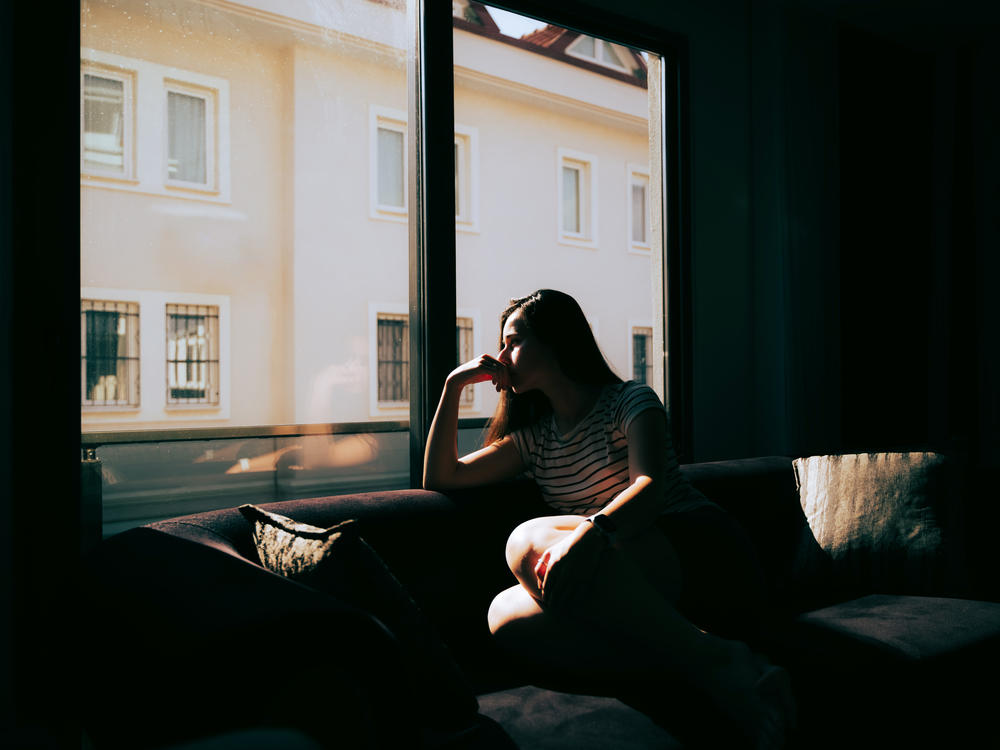Section Branding
Header Content
Americans who live alone report depression at higher rates, but social support helps
Primary Content
People living alone are more likely to report feeling depressed compared to those living with others, according to a new study by the CDC's National Center for Health Statistics. And that effect is particularly stark for people living alone who say they have little or no social and emotional support.
"The most interesting takeaway from this study was the importance of feeling supported," says social scientist Kasley Killam, who wasn't involved in the new study. "And this is consistent with other evidence showing that social support and emotional support really play a pivotal role in people's overall health and well-being."
The new study comes at a time when the number of single person households in the U.S. has skyrocketed. In the decade from 2012 to 2022, the number of Americans living alone jumped by nearly 5 million to 37.9 million.
The study relies on 2021 data from the annual National Health Interview Survey, which interviews people in a nationally representative sample of households across the country. It found that a little over 6% of those living alone reported feelings of depression, compared to 4% of people living with others.
The good news about the findings, says author Laryssa Mykyta, is that the vast majority of people living alone didn't report adverse mental health symptoms. "Most adults who live alone – 93% – report either no feelings of depression or low feelings of depression," she says.
The survey also asked respondents about the levels of social and emotional support in their lives. "Respondents were asked, 'How often do you get the social and emotional support you need? Would you say always, usually, sometimes, rarely or never?'" says Mykyta.
Those who live alone and receive little or no social and emotional support were far more likely to report feelings of depression compared to people who live with others who also had little or no support. On the other hand, there were no differences in reports of depression between people living alone and those living with others if they had social and emotional support.
That finding is the "most compelling and most interesting," says Mykyta, because it shows the importance of social and emotional support in people's mood and wellbeing.
Social isolation and loneliness are increasingly being recognized as a public health problem. Studies have shown them to be linked to a higher risk of mental and physical illnesses.
"They're associated with a whole host of negative outcomes, including diabetes, depression –like we saw in this study – dementia, heart disease and even mortality," says Killam, who's the author of the upcoming book The Art and Science of Connection. "So they truly are risk factors for people's health and well-being."
In 2023, the U.S. Surgeon General Dr. Vivek Murthy released an advisory to raise awareness about loneliness and social isolation as a public health crisis. Murthy has also penned a book on the topic, titled Together.
"As health care providers, we need to be asking, is there someone there for you?" says psychiatrist Dr. Tom Insel, author of Healing: Our Path from Mental Illness to Mental Health. "And that's different from saying that you're living alone, because a lot of people who live alone have plenty of social support."
Asking that question, he says, will allow healthcare professionals to help address their patients' social isolation.
"You know, we can help people to find community," he says. "We can make sure we can prescribe social interaction. We can prescribe ways for people to actually become more engaged and to get the kind of social-emotional support they need."
Correction
The audio version of this story and an earlier digital version overstate how quickly the number of single-person households in the U.S. is growing. The number grew by 4.8 million to reach nearly 38 million. It did not jump from 4.8 million to 37.9 million in a decade.

